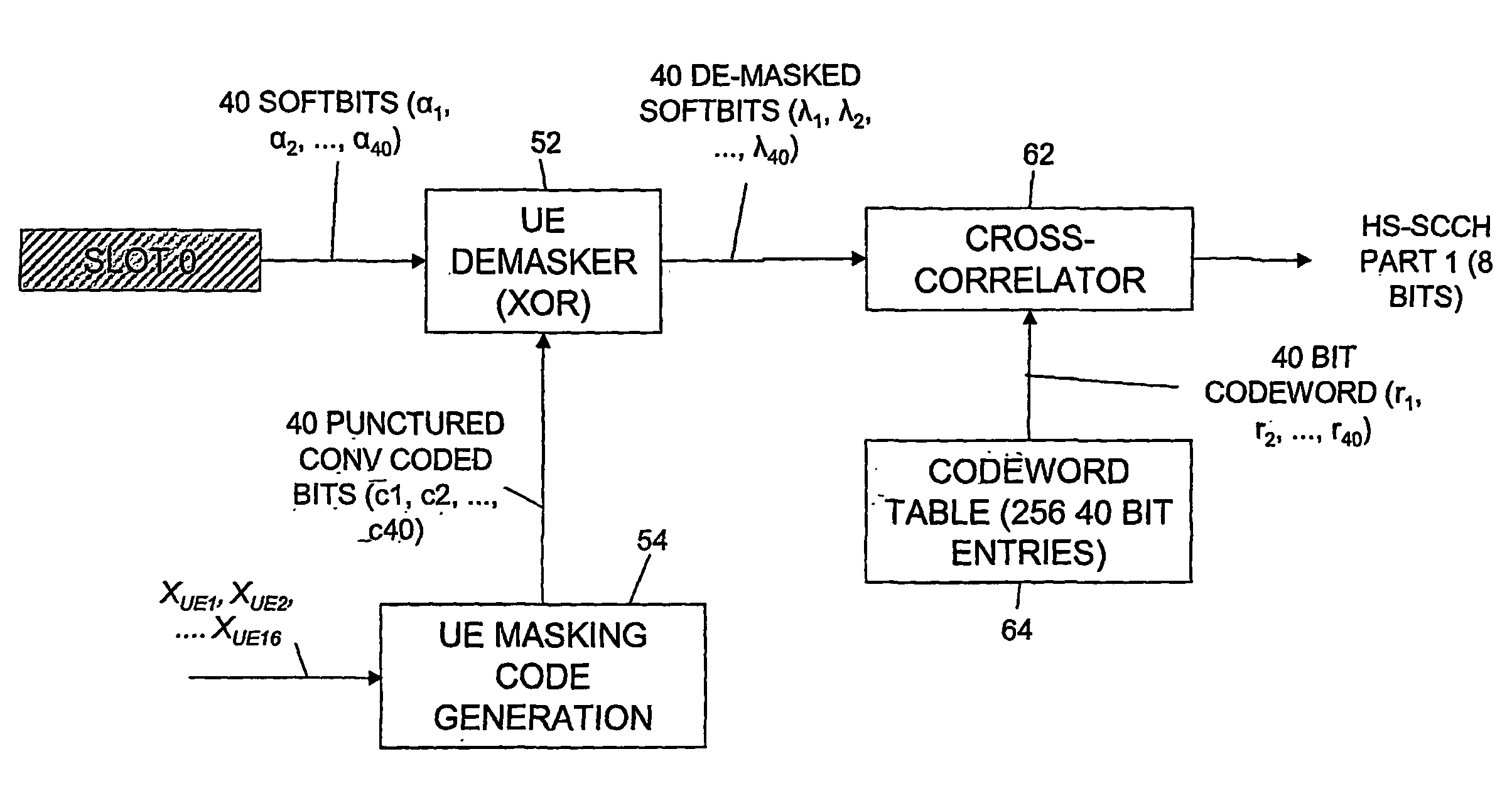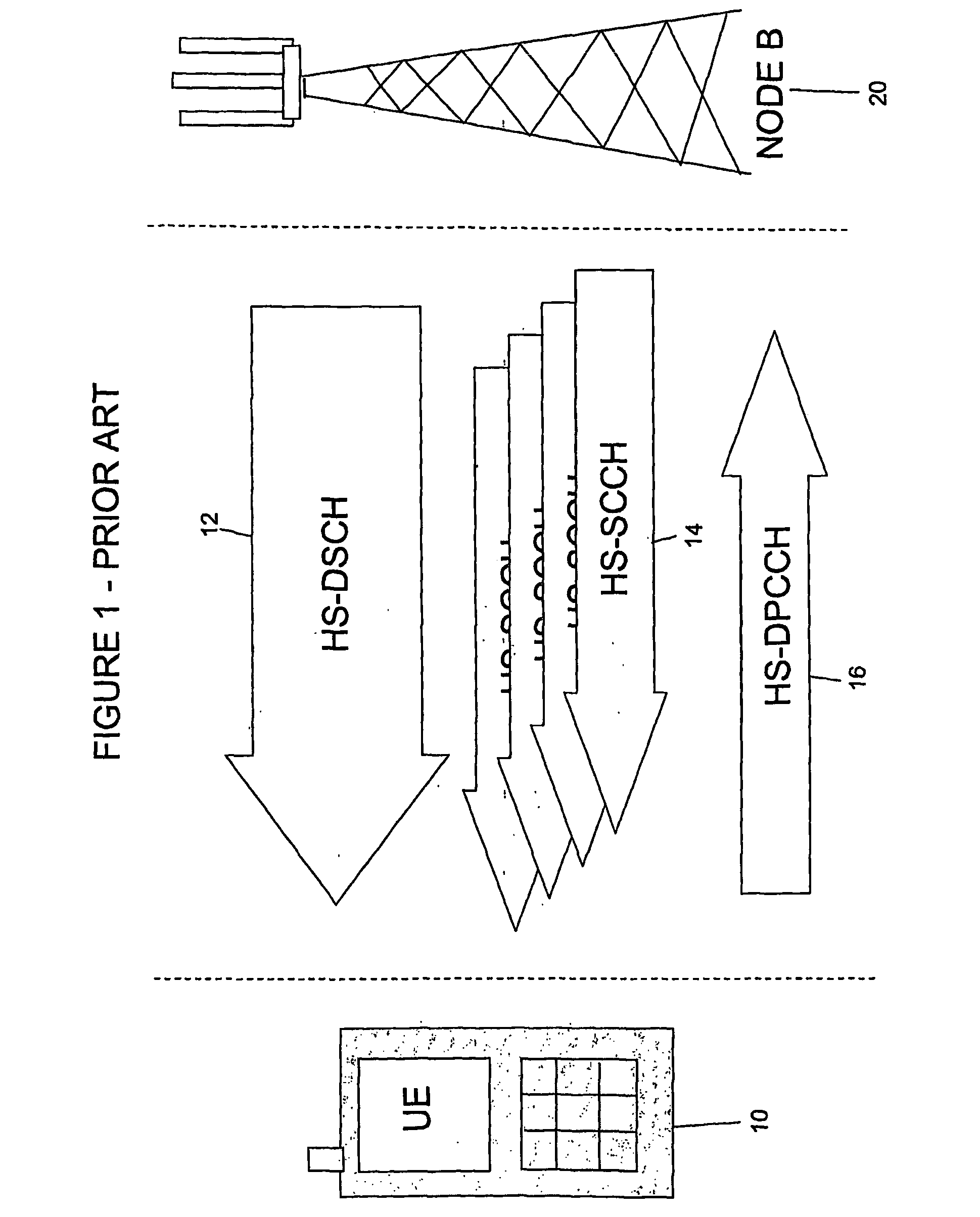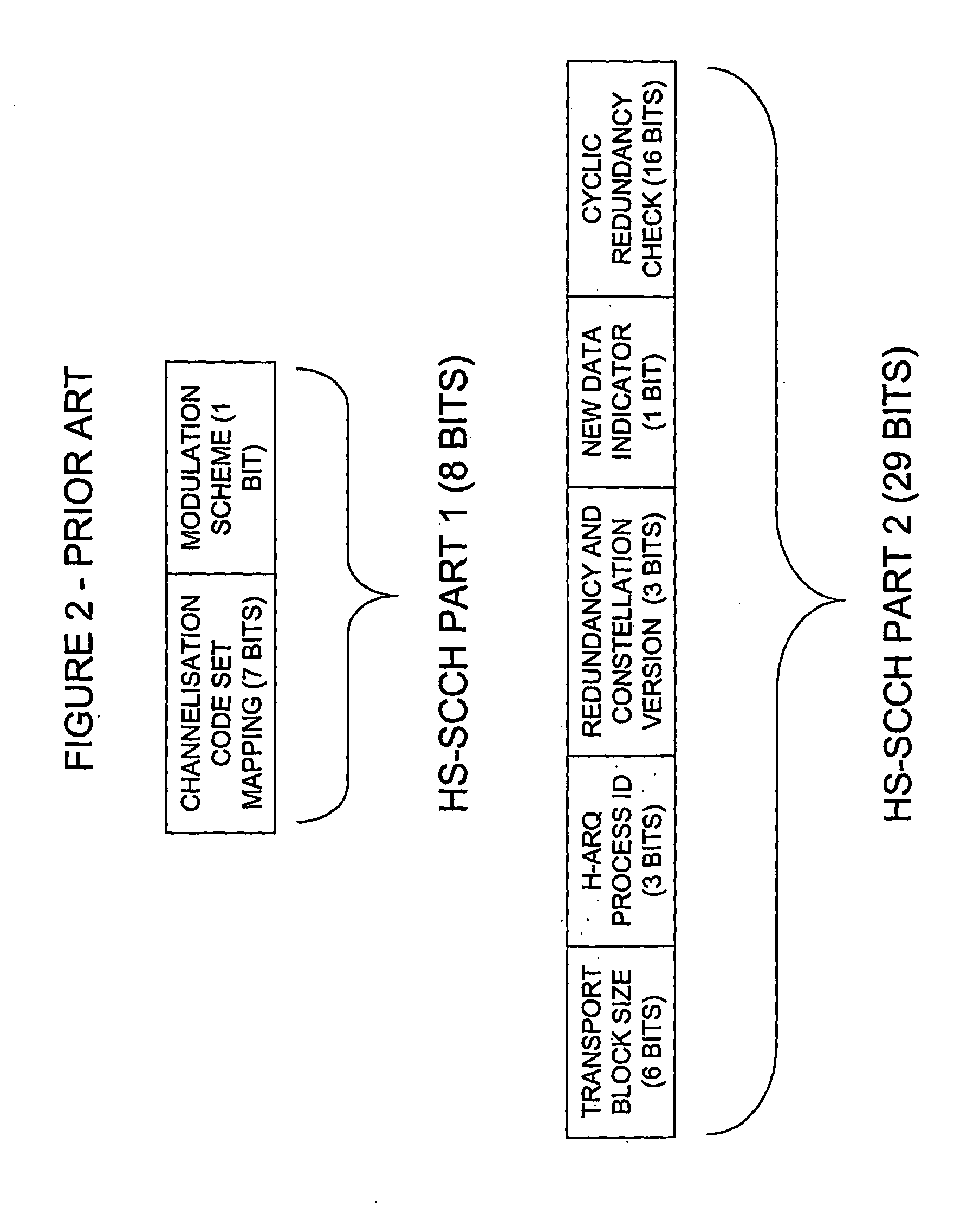Brute force channel decoding
- Summary
- Abstract
- Description
- Claims
- Application Information
AI Technical Summary
Benefits of technology
Problems solved by technology
Method used
Image
Examples
Embodiment Construction
[0040]A preferred embodiment of the present invention will now be described with respect to FIGS. 5 to 8.
[0041]More particularly, FIG. 5 shows a decoder according to the preferred embodiment for decoding the HS-SCCH Part 1 channel. The decoder of FIG. 5 would typically be provided in the UE 10, such as a user mobile telephone, or the like. Of course, the UE 10 may be another device, other than a mobile telephone, such as, for example, a PDA or a computer 3G network card, such as a PCMCIA card, or the like, arranged to allow a computer, typically a laptop or notebook computer, to communicate via the mobile telecommunications network.
[0042]In whatever form of UE the embodiment of the invention is used, the decoder for the HS-SCCH Part 1 signal according to a present embodiment comprises a UE de-masker 52 and a UE masking code generator 50 which are the same as previously described in respect of the conventional decoder of the prior art in FIG. 4. That is, the de-masker 52 is typically...
PUM
 Login to View More
Login to View More Abstract
Description
Claims
Application Information
 Login to View More
Login to View More - R&D
- Intellectual Property
- Life Sciences
- Materials
- Tech Scout
- Unparalleled Data Quality
- Higher Quality Content
- 60% Fewer Hallucinations
Browse by: Latest US Patents, China's latest patents, Technical Efficacy Thesaurus, Application Domain, Technology Topic, Popular Technical Reports.
© 2025 PatSnap. All rights reserved.Legal|Privacy policy|Modern Slavery Act Transparency Statement|Sitemap|About US| Contact US: help@patsnap.com



